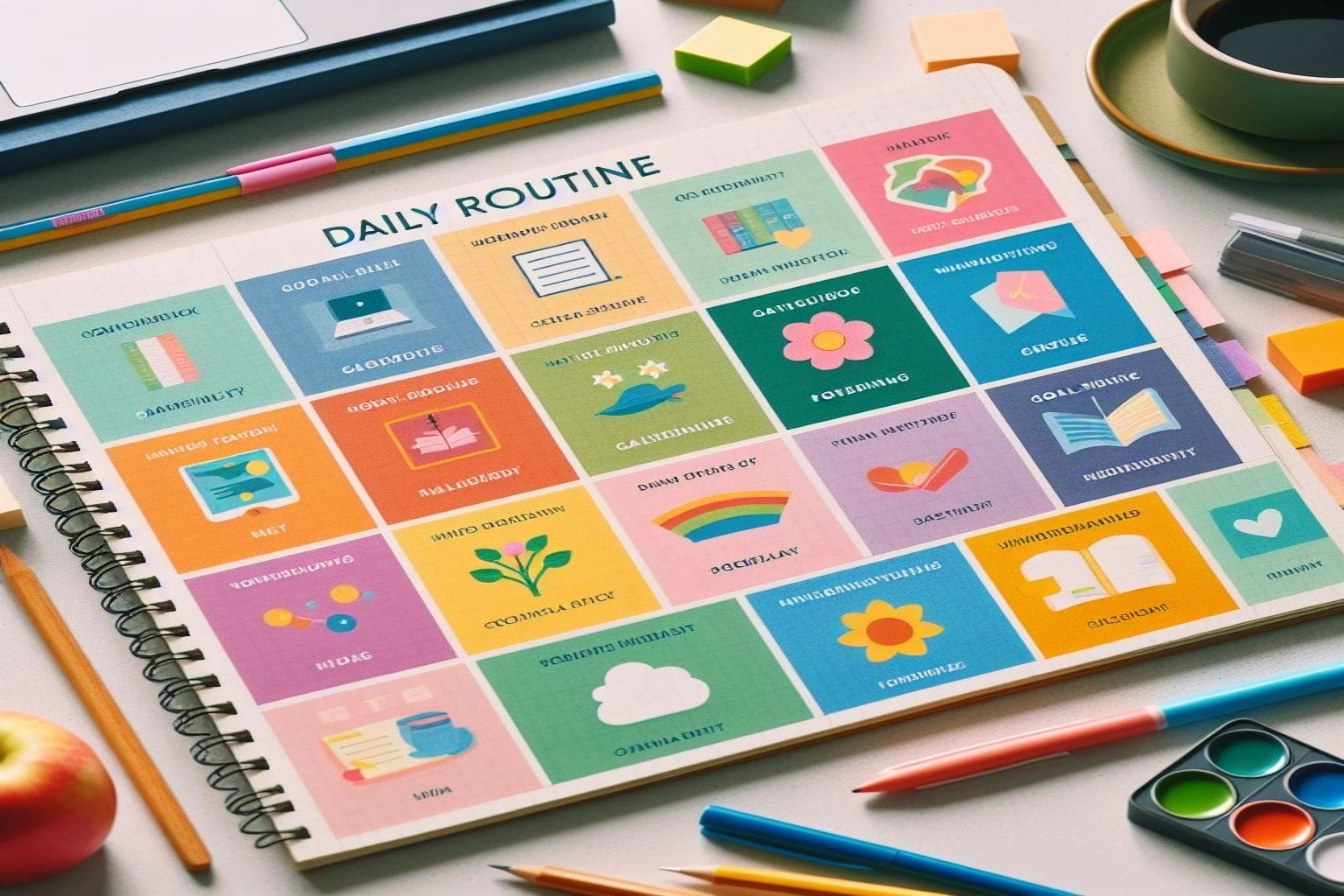
Every January, roughly 40% of Americans set New Year’s resolutions to better themselves in some way. Yet by February, a staggering 80% have already abandoned these goals.
Why do we seem incapable of achieving the goals we passionately set out to accomplish each year? More importantly, how can we break this cycle of repeatedly setting and abandoning ambitions?
Goal achievement requires dedicated effort towards delayed rewards and overcoming inevitable hurdles. Our psychology seems rigged against this. But with science-backed strategies, lifelong behavior change is possible.
In this article, we’ll dig into the research to uncover:
- The psychological roadblocks hindering our goal pursuit
- Proven techniques to transform motivation into action
- How to course correct when faced with obstacles and setbacks
- The critical supports for long-term consistency
Arm yourself with these insights and evidence-based habits to successfully accomplish your goals this year and beyond.
Why We Repeatedly Abandon Our Goals
Before outlining key strategies for goal achievement, we must first understand the psychology behind why we struggle in the first place. Our minds have evolved mental shortcuts that prioritize immediate rewards over future payoffs. Additionally, we rarely prepare ourselves with the skills and supports needed to push past inevitable hurdles.
Our Brains Prioritize Instant Gratification
Humans have evolved to notice immediate threats and seek quick rewards. It provided an evolutionary advantage – act now or risk getting eaten by that tiger! But today this means we gravitate towards instant gratification, even at the cost of better long-term outcomes.
Researchers refer to this tendency as delayed discounting – the further out in the future a reward lies, the less motivation we feel to work towards it in the present. This helps explain why despite genuinely wanting to save for retirement decades down the road, many find it difficult to make the effort to save and invest money on a regular basis now.
Essentially our prefrontal cortex, responsible for rational planning, battles against more primal limbic system drives seeking pleasure and avoiding pain at all costs. The limbic system usually overpowers rational thought. I want to eat that cupcake NOW instead of adhering to my diet. Scrolling social media relieves boredom this instant, though I know I’ll feel unfulfilled later.
Making matters worse, as we get closer to achieving a long-term goal, motivation tends to decline, not increase. Researchers call this the goal gradient effect. Most of the positive feelings come from initially setting the goal and imagining the future benefits. As the hard work piles up, that motivation fades.
This explains the all too common phenomenon of enthusiastically signing up for an ambitious goal like training to run a marathon, only to abandon it well before race day. The excitement of imagining yourself crossing the finish line motivated action early on. But as the long miles of training stack up, self-doubt and waning motivation kicks in.
We Don’t Prepare for Obstacles Along the Way
Pursuing ambitious goals over months or years inevitably leads to obstacles, failures, and setbacks along the way. Without proper systems in place to course correct, these hurdles understandably demotivate people to the point of giving up entirely.
Yet preparation for these challenges rarely factors into the ambitions we set each year. Part of this has to do with well-documented human tendencies for unrealistic optimism and overconfidence when predicting the future. Setback preparation conflicts with the rosy future we envision.
Additionally, drawing up detailed “plans” feel pointless since conditions unpredictably change over time. But failing to at least consider what support systems and mindsets are needed to overcome likely obstacles down the road leaves you profoundly underprepared when faced with life’s realities.
Ambitious goals never play out exactly as envisioned. But with the right combination of psychological best practices, lifelong behavior change is possible. Let’s explore techniques to effectively harness motivation and push through barriers on the journey towards goal achievement.
7 Science-Backed Strategies for Achieving Goals
Luckily, insights from psychology and neuroscience research reveal key strategies proven to boost motivation and grit to accomplish meaningful goals. Implement these methods to transform your goal pursuit this year and beyond.
1. Set Specific and Realistic Target Goals
Clearly define what exactly you want to accomplish and by when. Quantify your aims when possible and determine reasonable milestones. Pursuing vague, ambiguous goals makes tracking progress next to impossible. Monitoring advancement towards concrete objectives keeps motivation high.
Without clear targets, it’s easy to move goalposts as deadlines approach. Oh I didn’t really mean I’d fully achieve X by Year’s end. I’ve made progress towards it at least! Such rationalizations leave you dissatisfied and unaware of real progress made.
Equally as important is setting realistic expectations given your unique circumstances and abilities. While ambitious targets warrant some stretch, goals completely misaligned with reality disempower more than inspire.
Ask yourself – do I have the bandwidth, resources, skills and supports to reasonably achieve this goal by this deadline? If not, consider scaling back ambitions to what’s viable now. Achieving a realistic goal empowers while abandoning an extreme one demotivates. Get the balance right.
2. Break into Manageable, Timebound Sprints
Don’t attempt to accomplish an ambitious endeavor all at once. Segment it into smaller, bite-sized objectives with clear deadlines – sprints. This makes the overall finish line seem less impossibly distant.
Sprints provide built-in momentums – frequent opportunities for small wins to celebrate progress. This boosts motivation and energy stores for the road ahead. Shorter sprint cycles also allow quick course correction if things veer off track.
For example, instead of aiming to write an entire book someday, begin with sprinting to complete individual chapters on set timelines. Determine logical chunks that collectively build towards your ultimate vision. Tracking advancement at each sprint milestone quantifies progress made.
3. Adopt a “Fail Without Abandon” Mindset
When pursuing challenging, long-term goals, obstacles and failures are inevitable. How you emotionally react and Behaviorally respond to these setbacks determines your fate – ultimately succeed or entirely give up.
Perfectionistic all or nothing thinking sabotages goal achievement. Mess up my diet for one day? May as well binge eat this whole week! Fail a sprint goal? I obviously can’t accomplish this after all! Such thinking causes people abandon goals after experiencing normal stumbles.
Instead, adopt a “fail without abandon” mindset focused on progress over perfection. Limit self-criticism when falling short of aims. Analyze what factors created the setback while building on wins so far. Determine the next viable step forward from here.
View setbacks as data revealing where supports or contingencies need bolstering – not reasons to give up altogether. With consistency often mattering more than performance, persistent grit triumphs over sporadic intensity.
4. Leverage Visualization to Combat Delayed Discounting
Since our brains wired to prioritize immediate gratification, pursuing distant rewards requires countering this tendency. Powerfully visualize yourself successfully achieving the goal and reaping future benefits. Emotionally transporting yourself into the future leverages parts of the brain otherwise unmoved by rational arguments alone.
Vivid mental contrasting – juxtaposing current struggles against future victories – also boosts motivation in the present. Regularly imagining how achieving your goal will positively impact your life years down the road keeps priorities in perspective.
Emerging research even suggests visually editing current photos to age your face, a strategy called the “visual bridge”, heightens future self-connections driving goal-supportive choices now.
While future visualization alone isn’t sufficient, consciously connecting to your future self makes delayed rewards feel more immediate. Emphasize you’re putting in the hard work now to benefit the person years down the road still you.
5. Write Down Your Goals
Committing goals to paper crystallizes them into intentions you take seriously. Those who write down goals are 42% more likely to achieve them than those who merely think about them.
Another study found that writing down goals, making action commitments, identifying accountability partners, and tracking progress reports achieved up to 76% of their goals. Unwritten goals saw only 43% success rates.
Written goals function like contracts with your future self. Shared accountability and public commitment pressure follow through. Writing also engages more neural regions than simply thinking, anchoring intentions deeply into memory.
Regularly reviewing written goals imprints ambitions and subconsciously primes goal-aligned action. Writing goals is deceptively powerful yet underutilized strategy.
Treat written goals as living documents – periodically update targets as conditions and aspirations change. But resist editing merely because commitment feels inconvenient in the moment.
6. Enlist Social Support for Accountability
Consistency breeding excellence more than intensity, regularly accountable to someone profoundly impacts follow through. Enlist personal and professional supports who cheer progress and provide guidance when motivation lulls.
Ask a friend, family member, or peer striving towards similar ambitions to be an accountability partner. Check-in regularly and update on progress. Shared journey partners empathetically problem solve when you face obstacles.
Working towards purpose among others cultivates engagement missing with solo pursuit. Find online communities or local meetup groups around your goal interest area. Collaborating with those who share your passions energizes once solitary endeavors. Surround yourself with personal and community support systems rooting for your success.
If you struggle asking others directly, still leverage accountability, just stealthier. Committing goal efforts and progress on social media platforms work. Even if posts seen by few, the publicness alone pressures follow through.
Regardless how accounted, solo journeys easily derail – external oversight and involvement meaningfully improves achievement rates. Our deeply social brains wired for interdependence and cooperative progress. Embrace this.
7. Clear Physical and Digital Clutter Impacting Focus
Subconsciously, visual messiness signals cognitive disorganization. Physical and digital clutter competing for mental bandwidth hinders sustained focus required for goal progress. Streamline your spaces and devices for clarity.
The visual context processes images extremely efficiently. Clean desk surfaces with only goal-essential items prominently displayed removes mental friction. Psychology research confirms cluttered rooms and workspaces tax concentration bandwidth.
Likewise, constant smartphone pings and app alerts magnetically tug attention. Temporarily mute notifications unlikely related to completing priority tasks. Having fewer browser tabs visible curbs digital temptation to stray off course.
Taming external distraction frees cognitive horsepower for what’s truly important. Tunnel vision surroundings towards your most pressing goal activities. Clear your mental cache. Streamlining space grants clarity of mind.
Conclusion
Change is hard. Lasting transformation even harder. Once the initial excitement of establishing goals fades, actually accomplishing them requires countering our psychology, preparing for struggles, and supporting consistency.
But by understanding these mental pitfalls and purposefully utilizing science-backed strategies – smart goal setting, accountability systems, motivation management, environmental design, etc – your chances achieving resolutions reach new heights.
The time is now. Knowledge and techniques exist to realize that better future self previously only fantasized about. Implement these psychological best practices and witness yourself accomplish goals once abandoned repeatedly in the past.







